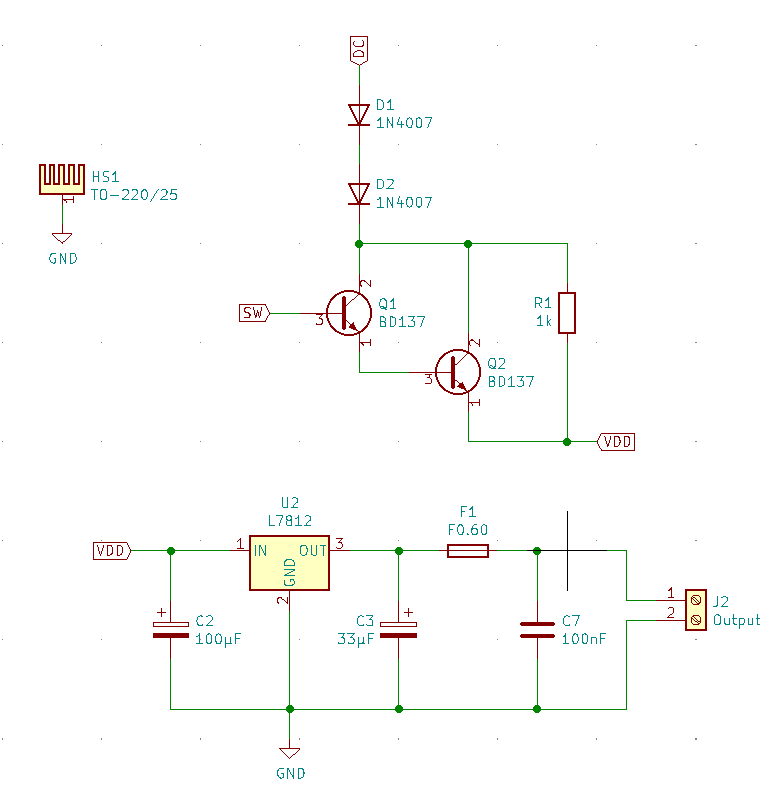I've been testing a power supply I've made and noticed that a +/- VCC voltage spike occurs when a resistive load is attached/disconnected (or when a power is lost) due to capacitor transients.
The spikes are relatively short (around 1 millisecond.) I would like to eliminate them if possible on the power supply level.
The negative voltage spike could be eliminated by attaching a Schottky diode, which is probably the easiest solution, but is there a better one? Better yet, should I be worried at all?
I am tempted to design a sub-circuit that would monitor an abrupt change in voltage and, if detected, cut the load off for an arbitrary duration of time. Seems like overkill, though.
The regulator used is an LM7812 (100uF on the input and 33uF on the output) with a load that can draw up to 0.5A.
Circuit
Old 19V laptop adapter is used, mostly because it was the only one I had lying around that was able to provide 2A of current needed for 4x 0.5A loads.
To get around the thermal limitations of LM7812, I used two rectifier diodes in series to drop around 2V and a Darlington pair to drop additional 2V.
Darlington pair is also used for preventing potentially high in-rush currents - comparator turns it on after ~250ms.
PCB
PCB is relatively simple.
Test
Test load was purely resisitive, a 47 ohm resistor.
Scope probe was connected on the positive side of the resistor, the ground clip to the negative - ground, and coupling was set to AC.
Interestingly enough, spike differed from the one I measured two days ago
PSU Turned On
PSU Turned Off




